Seals were in common use in biblical times as a means of tamper proofing documents and placing on them the authority of the person whose seal it was, in some ways it was akin to a personal signature. The instrument for making the seal was a carved or engraved device that left a distinctive pattern or words when pressed into soft clay that contained string binding the document. In the Bible it was often a stone (signet) set into a ring as mentioned in Jeremiah 22:24. The use of the ring seal is described in the case of Pharaoh giving his ring to Joseph (Genesis 41:42) as a symbol of his delegated authority; of King Xerxes sealing the proclamations with his own ring, that were being sent to all of the provinces (Ester 3:12) and of Jezebel sending out letters in Ahab’s name (1Kings 21:8-16).
Clay bullae (singular: bulla), or seal impressions, are among the most common biblical artifacts found in Israel and the Near East and hundreds have been found. In the fiery destruction of cities that were so common in antiquity, the documents and strings usually burned away, but the clay bullae were baked hard and therefore preserved.
The Hebrew University of Jerusalem announced a significant discovery on December 2, 2015; the first seal impression of a Judahite king ever found by archaeologists in Jerusalem.
The impression says, “Belonging to Hezekiah [son of] Ahaz, king of Judah.”
“Although seal impressions bearing King Hezekiah’s name have already been known from the antiquities market since the middle of the 1990s—some with a winged scarab (dung beetle) symbol and others with a winged sun—this is the first time that a seal impression of an Israelite or Judean king has ever come to light in a scientific archaeological excavation,” Dr Eilat Mazar said in the Hebrew University press release.
Hezekiah, who lived from 715 to 686 B.C., is prominent in the books of 2 Kings, Isaiah, and 2 Chronicles for his extensive reforms prior to the Assyrian campaign of Sennacherib. The Bible states; There was none like him among all the kings of Judah, either before or after him.[1]
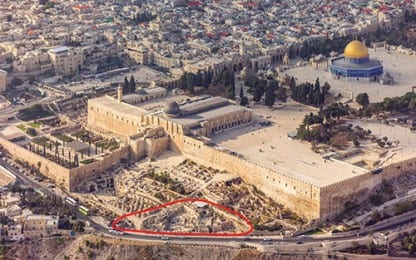 The bulla was found in 2009 during the Ophel excavations which is the area between the City of David and the Temple Mount (“ophel” meaning a high place to climb to) directed by Dr. Eilat Mazar of the Institute of Archaeology at the Hebrew University of Jerusalem, but it was only identified this year during the preparation of the final report of the excavations. Several hundred of these bullae have been found in Jerusalem during the Ophel (outlined in red in the accompanying photo) excavations recently thanks to the procedure of wet sifting, which occurs when water is sprayed over the contents of a bucket of excavated dirt.
The bulla was found in 2009 during the Ophel excavations which is the area between the City of David and the Temple Mount (“ophel” meaning a high place to climb to) directed by Dr. Eilat Mazar of the Institute of Archaeology at the Hebrew University of Jerusalem, but it was only identified this year during the preparation of the final report of the excavations. Several hundred of these bullae have been found in Jerusalem during the Ophel (outlined in red in the accompanying photo) excavations recently thanks to the procedure of wet sifting, which occurs when water is sprayed over the contents of a bucket of excavated dirt.
Follow this link to view a fascinating nine minute account of its discovery by Dr Eilat Mazar http://www.keytodavidscity.com/
Evidence of Jeremiah’s Jailers
While Jerusalem was under siege from the Babylonians (588-586 BC), Jeremiah urged the people to surrender and live and those who do not will die. This was a message he received from God.[2] As a consequence, some of King Zedekiah’s officials took Jeremiah and threw him into a cistern which was empty, although Jeremiah did sink into the mud. Two of these officials were Jehucal son of Shelemiah and Gedaliah son of Pashur.[3]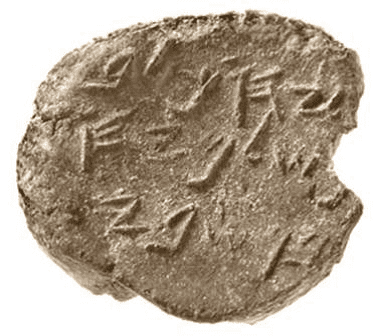
In 2005 archeologist Dr Eilat Mazar discovered a bulla (a clay seal) when she was digging near the Dung Gate of the Old City. It was dated to the sixth century BC and the Paleo-Hebrew writing on it, was translated as: belonging to Jehucal son of Shelemiah son of Shovi.
While digging further in 2008 in the same area, Dr Mazar discovered another bulla also dated to the sixth century BC, this time with the inscription: Gedaliah son of Pashur.
The significance of these bullae is that they confirm the reliability and accuracy of the Bible even down to the names of the king’s officials.[4]
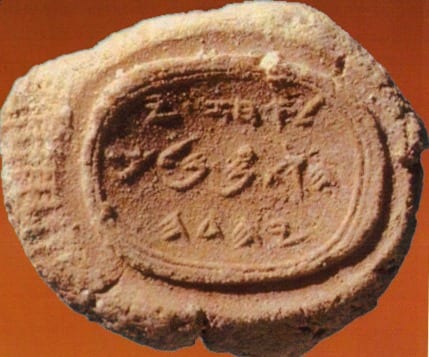 Hezekiah’s father, King Ahaz’s seal is a bulla originating from 8th century BC. The place of discovery of this seal is unknown, and it is currently part of Shlomo Moussaieff’s private collection. The seal contains an ancient Hebrew inscription mentioning the name of Ahaz of Judah, as well as the name of his father, Yehotam (Jotham), identifying Ahaz as the “King of Judah”. The bulla contains a fingerprint which may belong to Ahaz himself.
Hezekiah’s father, King Ahaz’s seal is a bulla originating from 8th century BC. The place of discovery of this seal is unknown, and it is currently part of Shlomo Moussaieff’s private collection. The seal contains an ancient Hebrew inscription mentioning the name of Ahaz of Judah, as well as the name of his father, Yehotam (Jotham), identifying Ahaz as the “King of Judah”. The bulla contains a fingerprint which may belong to Ahaz himself.
Seals of other Judean and Israelite kings.[5]
Since these seals are traded on the antique market, there is no way to authenticate them, however most archaeologists believe them to be authentic.
Southern Kingdom
Uzziah (2 Kings 15:13-34; 2 Chronicles 26:27; Isaiah 6:1).
Manasseh (2 Kings 20:21; 2 Chronicles 33:10-11).
Jehoahaz (2 Kings 23:30-34; 1 Chronicles 3:15; 2 Chronicles 36:1).
Northern kingdom
Ahab (1 Kings 16:28-33; 21:13; 22:39).
Jeroboam ll (2 Kings 13:13; 1 Chronicles 5:17; Amos 1:1; 7:9-11).
Hoshea (2 Kings 15:30; 17:1).
Other Seals
Thirty one seals have been found which are mentioned in Holden and Geisler’s book4 that belong to people of the Bible.
These seals add further water-tight evidence for the fact that the Bible is an account of real people and is real history.
[1] 2 Kings 18:5.
[2] Jeremiah 38:2.
[3] Jeremiah 38:1.
[4] Both images are courtesy of Generation Word; generationword.com.
[5] Joseph M Holden and Norman Geisler, The Popular Handbook of Archaeology and the Bible, Harvest House, 2013.
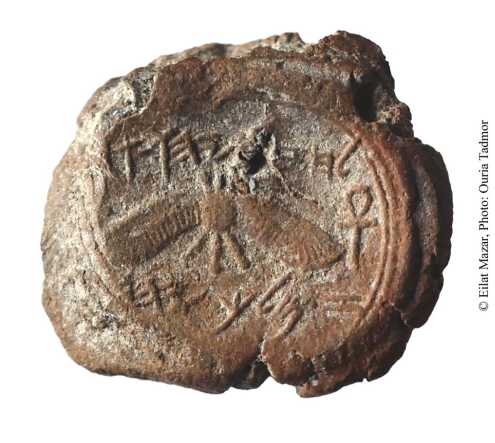
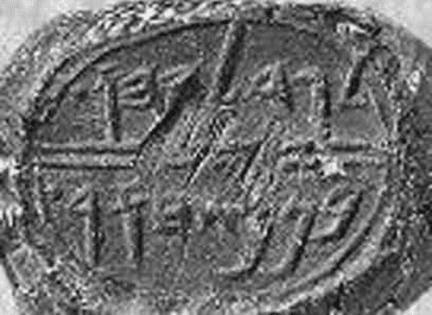


1 Comment. Leave new
Fascinating. Thanks again for providing firm evidence for the Bible’s historicity. We sure need to take seriously the words of Christ who equated Himself with God … certainly not just a normal man!